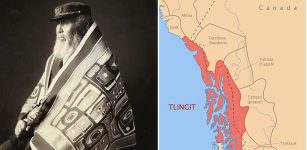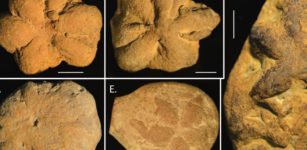Facial Reconstruction Of Chinese Emperor Wu Who Lived 1,500 Years Ago
Conny Waters - AncientPages.com - Emperor Wu, who reigned from 543 to 578, was a prominent figure in China's Northern Zhou dynasty. He is most notably recognized for his significant contributions to strengthening the military forces, subduing the Turks, and consolidating northern China following his victory over the Northern Qi dynasty.
A team of researchers wondered what the Chinese Emperor who lived 1,500 years ago looked like, so they reconstructed his face using DNA extracted from his remains.
The facial reconstruction of Emperor Wu who was ethnically Xianbei. Credit: Pianpian Wei
In their study, published in the journal Current Biology, the researchers write that the Emperor's death at the relatively young age of 36 could potentially have been attributed to a stroke. Some scholars argue that the Emperor was poisoned by his rivals.
The study further illuminates our understanding regarding the genesis and migratory trends of a once dominant nomadic empire that once ruled over certain regions in northeastern Asia.
Emperor Wu was ethnically Xianbei, an ancient nomadic group that lived in what is today Mongolia and northern and northeastern China.
"Some scholars said the Xianbei had 'exotic' looks, such as thick beard, high nose bridge, and yellow hair," says Shaoqing Wen, one of the paper's corresponding authors at Fudan University in Shanghai. "Our analysis shows Emperor Wu had typical East or Northeast Asian facial characteristics."
In 1996, a significant archaeological discovery was made in Northwestern China - the tomb of Emperor Wu. This site yielded numerous remains, including an almost intact skull. With the advancements in ancient DNA research over recent years, Wen and his team were able to extract more than 1 million single-nucleotide polymorphisms (SNPs) from his DNA. Intriguingly, some of these SNPs held information regarding Emperor Wu's skin and hair color.
Combined with Emperor Wu's skull, the research team successfully executed a 3D reconstruction of his face. The result reveals that Emperor Wu had brown eyes, black hair, and dark to intermediate skin, and his facial features were similar to those of present-day Northern and Eastern Asians.
"Our work brought historical figures to life," says Pianpian Wei, the paper's co-corresponding author at Fudan University. "Previously, people had to rely on historical records or murals to picture what ancient people looked like. We are able to reveal the appearance of the Xianbei people directly."
The genetic study reveals that the Xianbei people mixed with the Han Chinese population as they moved south into northern China. This is a crucial insight into how ancient civilizations dispersed across Eurasia and assimilated with local communities.
The team's next step is to conduct an in-depth study of the inhabitants of the ancient city of Chang'an, located in northwestern China. This will be achieved by examining their ancient DNA.
See also: More Archaeology News
For several millennia, Chang'an served as the capital city for numerous Chinese empires and marked the eastern endpoint of the Silk Road - a significant Eurasian trade route from the second century BC until the 15th century. By analyzing DNA samples, researchers aim to uncover additional insights into patterns of migration and cultural exchange that occurred in ancient China.
The study was published in the journal Current Biology
Written by Conny Waters - AncientPages.com Staff Writer





















